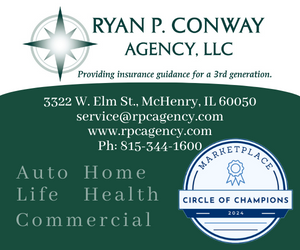Thomas Stamborski
Tom is President of Liquid Capital of Illinois
Bob Dylan’s poetic lyrics and timeless melodies have been stitched into modern culture. Although Dylan’s 1964 song was not about the business world per se, his words are just as applicable today. The times certainly are a-changing as we soon enter into the post-pandemic era.
Without question, much has changed since March 2020.
Fueled by the COVID 19 pandemic, our world has been dramatically impacted by this medical crisis. In almost every aspect of our lives, both personal and professional, some form of change was required to deal with the multiple issues affected.
Within the banking industry, bank executives, lenders and staff members witnessed the impact on their customers in general and commercial customers in particular. Some industries were harder hit, such as restaurants, hotels, hospitality, and retailers. Many businesses were scrambling to survive, with rightful concerns as to the impact on their employees, as well as the ripple effect on their suppliers and other vendors.
Ironically, the pandemic presented some companies with unique and sizeable opportunities to expand their businesses or to pivot to another product or service. As the pandemic wore on, governmental programs were developed to provide some level of relief, albeit temporary.
In all of these scenarios, an underlying need and theme was and is, where can I source financing? As with similar situations, where there is a gap, someone will find a way to fill the void. Many business owners turned unconventional lenders offering merchant cash advance loans and other types of “unsecured” loans. While this type of lending appeared attractive on the face of it, in many instances it only exacerbated the problem by subjecting the business owner to onerous terms and conditions.
Keeping up with financial demands
In responding to the needs of business owners, Congress approved various programs such PPP, CARES Act and EIDL loans. Banks initially led the way in assisting their customers with the application process, followed by the loan forgiveness process. Other third-party, non-bank lenders joined in to address the volume of applications.
The congress then approved a “2nd Draw” PPP loan program for those businesses qualifying. While these programs have clearly been helpful for many businesses, the government can’t continue an open-ended level of support. Unfortunately, while helpful, these governmental programs have, in a number of instances, served to mask underlying problems and/ or give a company a false sense of confidence to overstep their bounds.
With that being the case, as the financial support progressively dissipates, the scope and severity of a given company’s financial condition will become apparent.
Every bank executive and commercial lender that I’ve spoken with, as well as numerous economists and chief investment officers agree that as we progress into 2021, many businesses will have financial challenges that impair their operations or put them at risk of failing.
On the other hand, as mentioned earlier, some companies will experience a level of growth that can also pose challenges. In both instances, the need for sufficient financing will be mandated.
Both banks and customers are changing to new business models

As the magnitude and severity of the financial impact on businesses became known, banks started to assess the level of risk within their loan portfolios as well as revisiting their credit policies. While governmental programs for payment deferrals, covenant easing and loan classification allowed banks some level of latitude in working with their customers, these too were only temporary support.
While the extent of financial impact on current and prospective customers and the length of this evolving scenario is unknown, it fosters thought as to what issues will banks need to address in whatever is considered the “new normal..
Clearly, the needs of businesses to have the appropriate level of financing will continue. However, the lending landscape has been altered by the pandemic. Prospects that previously appeared bankable may not be. Current customers may have facilities that don’t qualify for increases, are subject to reduction, not renewed or in more severe situations, the bank may wish to exit the relationship.
Conversely, some customers may experience a level of growth that either surpasses the bank’s ability approve the requested level of financing or involves a business transaction that the bank is unwilling to underwrite (i.e., purchase order financing). Given the pandemic’s emotional and psychological strain imposed on business owners, any of these scenarios does not bode well for the bank from a relationship and reputational perspective.
Although a similar situation existed prior to the pandemic, in a post-pandemic world, it’s even more important that banks have alternative options to offer the customer to enhance their ability to secure a new customer or maintain the allegiance of customers they wish to retain. In a highly competitive industry, losing an attractive prospect is a missed opportunity or having to replace a current customer is time consuming and costly.
Even before the pandemic, banks recognized the need to expand the range of non-bank financing options.
Through strategic alliances, organic development and direct acquisitions, a number of banks have equipped themselves and their lenders to offer solutions that enhance their ability to more broadly attract new customers and offer alternatives to supplement a current customer’s lending facility.
With so much demand for financing in the marketplace, a bank needs to demonstrate their desire to address the needs of their customers with a thoughtful and innovative approach. The “new normal” requires new thinking.
Reassessing the marketing thrust and branding of the bank is a serious consideration. Messaging will play an important role in communicating the bank’s sensitivity to the business owner’s situation and the bank’s desire and intent to address their needs. It needs to be communicated uniformly among all team members to convey a unified image.
To say that we’ve all been through a lot would be a gross understatement. Everyone looks forward to the day when we can resume regular activities. The changes, adjustments, and adaptations we’ve had to make has, in many instances, caused us to rethink our priorities and values in our personal and business lives.
While it has been stressful in many respects, it has been a teaching moment and raised our awareness as to what were temporary changes or those that are permanent. In many respects, it’s caused us to reflect on what needs to be changed going forward.
The banking industry, in its efforts to attract and retain customers, most of which have been impacted by the pandemic, is one where that analysis and thought process is well served by doing so.
As the old saying goes, “the one constant is change.” Recognizing the need to change and acting in a strategic and decisive manner can make a meaningful difference in the final outcome. The time to prepare is now.
Tom Stamborski
Liquid Capital of Illinois
Palatine, Illinois
Phone: 847-842-3300
tstamborski@liquidcapitalcorp.com

























